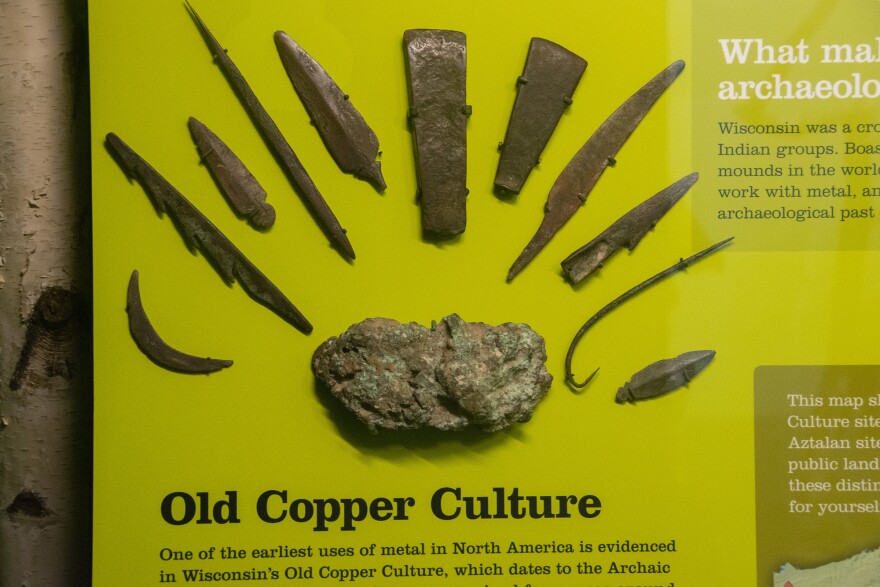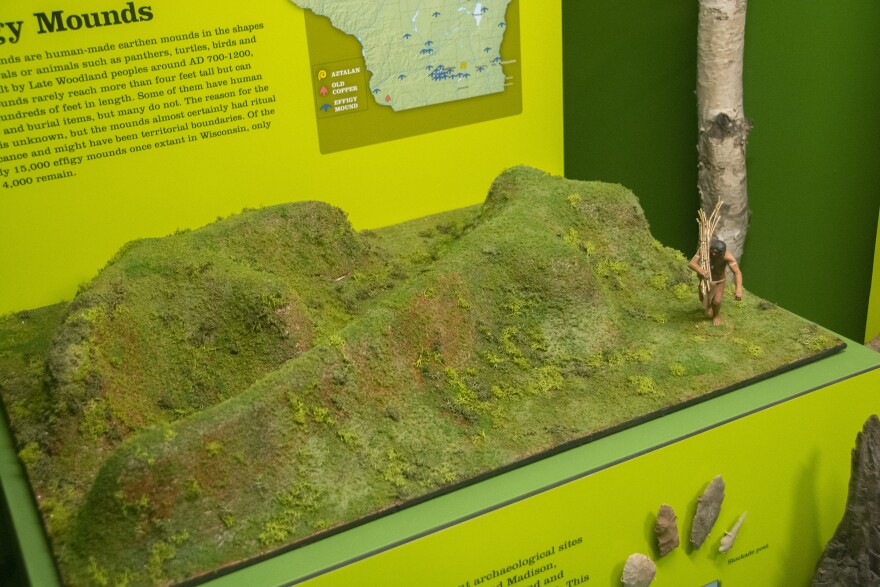With street names like Winnebago and villages such as Mukwonago, there's no denying the historical presence of Native Americans in Wisconsin.
That spurred one of our listeners to reach out to Beats Me:
"What groups of Indigenous people lived in southeastern Wisconsin?"
We're going to answer that question. But we're also going to explore the importance of not just talking in the past tense when it comes to Native Americans.
Beats Me: What Questions Do You Have For WUWM's Beats Reporters?
Dawn Scher Thomae says the presence of native people in Wisconsin dates back thousands of years. She's the curator of anthropology collections at Milwaukee Public Museum.
"There were a lot of tribes that moved in and out. So, we are on the traditional homeland here in Milwaukee of the Ho-Chunk, Potawatomi and Menominee," Scher Thomae explains. "But there were many other groups that were here also in Milwaukee and in the Milwaukee area. But they kind of came and went, like the Odawa or the Ottawa, for example, the Sauk and the Meskwaki."
And that still isn't the full list.
In one of the public museum's displays, titled "Pieces of the Puzzle," there are copper fishing hooks, needles, and other tools from Wisconsin's early native people.

Scher Thomae says three things make Wisconsin's native past really distinctive: old copper culture, effigy mounds, and projectile points (also known as arrowheads).
"Copper was one of the only indigenous metals in the entire country, and there was the largest deposit here. And then we had thousands of effigy mounds," she explains.

Wisconsin had more than 15,000 effigy mounds, according to Scher Thomae. Many of the mounds were 3-4 feet tall and constructed in shapes of animals, like birds or turtles.
"There wasn't always things inside them … And they were built in the area between 1700 and 1200," she explains.
Scher Thomae says only about 4,000 of the mounds remain.
READ: Pow Wow Welcomes All People In Celebration Of Native Culture & Heritage
But it's not just the past contributions Native Americans have made in Wisconsin that matter. So is the role they play today.
In fact, there are more than 7,000 Indigenous people who live in the Milwaukee area. And on Nov. 2 some celebrated UWM's 42nd Annual Autumn Pow Wow, an event organized by the university's American Indian Student Association.
Its president, Amaya Varela, says pow wows are emotional experiences for her.
"When I hear the music, like when the drums start going, my heart is beating fast. It's just emotional because we've gone through so much as a people, and to come together like that and to see how many natives there are in the community that care about preserving the culture is really moving," Varela says.
And the group's advisor, Celeste Clark, says pow wows are an opportunity to bring the community together — native and non-native.

"It's celebrating who we are. Not just one tribe, but who we are and that we have a presence here on campus. And that we're not museum pieces. We're still very much here," says Clark.
Margaret Noodin, a professor of English and American Indian studies at UWM, is concerned that some people refer to Native Americans mainly in the past tense. She's also the director of the Electa Quinney Institute, a research-focused institute at UWM that focuses on strengthening and celebrating American Indian education.
Noodin says the education system in the United States is part of the problem — and could be part of the solution.
"If we are going to change the way people think about Indigenous communities, Indigenous people, we have to start with understanding the history," Noodin explains. "And absolutely, you have to learn who the native people were here. And then we have to understand the change, how it happened over time, what shifted, and recognize the present."
Noodin says recognizing the present includes acknowledging that Native Americans aren't homogenous. She says there's not one way they look or dress, and there's no way to know if someone identifies as Native American unless they tell you, or you respectfully ask.

Do you have a question about race in Milwaukee that you'd like WUWM's Teran Powell to explore? Submit it below.
_








